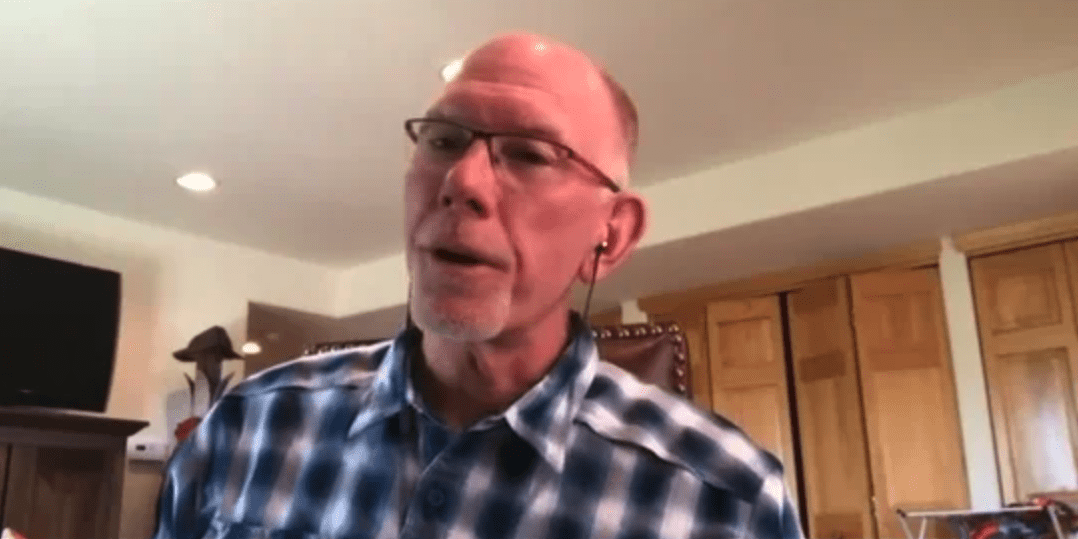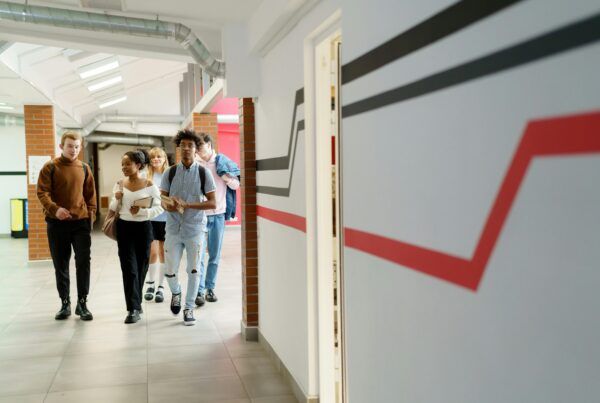In the next installment of the Strategic Finance Learning Studio interview series with Rick Staisloff, we’re talking with Chuck Ambrose, President and CEO of KnowledgeWorks, who discussed how we might emerge from COVID19 having made progress towards new models and much-needed changes in education.
Rick Staisloff:
We’re all working through these issues of COVID-19 in both our personal and professional lives. What’s the best idea you’ve seen for your team at KnowledgeWorks, both in short term response and beyond?
Chuck Ambrose:
At KnowledgeWorks, we had tools in place and people who are equipped to work virtually, but they were not necessarily equipped to work virtually at the same time that they took over childcare. When school went home, their kids came home, and they took on the role of educator in addition to the role of parent.
Like many others, they’ve had to do their jobs simultaneously while caring for their families. We started including their kids in our Zoom calls. I’ve offered credit for higher ed training for everyone from infants to second graders! We’re not unaccustomed to asking them questions and taking them seriously. If anything, the priorities we put in place were twofold: care and concern for our employees and their families, and trust that as our work accelerates, our mission was going to become even more critically important.
Rick Staisloff:
I love it. So, we’ve got competency-based education for infants, toddlers, teenagers and parents.
At KnowledgeWorks, you’re in the business, in part, of helping people plan. This is an even more challenging idea in today’s environment. How might we emerge from COVID-19 towards some new models in education?
When I think about education, many of the current challenges are challenges we’ve faced for some time. Maybe what’s changed is urgency. That dial got turned up to around 11. How does that feel to you in terms of what we’re trying to solve for?
Chuck Ambrose:
Rick, the way you frame that question hits me right between the shoulder blades. If we go back a decade, we’re really thinking about the fact that college costs too much. It takes too long to get a degree. There’s a skills gap between the degree and the competencies required to be effective within a changing world. Most importantly, with more than $1.7 trillion in student loan debt, students have had to leverage their future to even access the opportunity. That’s been the construct in which we thought about how we deliver higher ed. It’s a very inequitable system.
I thought the system would respond by providing equality. The big goal was to open the door of access and opportunity. Now I look back and think we just invited people into a very inequitable system that encumbered them with debt and gave them fewer opportunities to succeed. The construct, the elements—those aren’t new. It’s not just an urgency to respond; it’s an urgency to think differently about systems and how we support people reaching their fullest potential. We’ve got to create privilege for all. Higher ed has done a great job of extending privilege that already exists.
Rick Staisloff:
I’m glad you brought up the equity question. At rpk, we’re focused on the business model, and how resources tie to the mission and student success. I’m sure a lot of people reading might think, “That’s good you’re doing that, but what does that have to do with equity?” Do you think there are connections there?
Chuck Ambrose:
Without question. I tie equity to stewardship. I don’t want to discount what progress has been made: new tools like ‘intrusive’ advising and an overall sensitivity to the impact of rising costs. While we’ve acknowledged cost as a driver of inequality, however, we haven’t done much to actually address those costs. Ultimately, it’s a question of what we do with available resources. How do we reset our cost basis? How do we think differently about delivering competencies and credentials in ways that give more people—and especially underserved kids—the tools that make higher education a solution.
Rick Staisloff:
We’re going to keep wrestling with this question because we want to be able to turn that sense of injustice into action. What are the investments that best support student success and help them move toward their goals? What’s on the expense side of the equation that would help us to take pressure off price increases, maintain affordability, and increase access? We’re at the starting point of that conversation, but it’s incumbent upon all of us not just to admire the problem and empathize.
Chuck Ambrose:
You’ve helped campuses and KnowledgeWorks figure out what things actually cost and the ROI from those resources. It’s critical to look at how we might use our investments differently. If we’re going to turn those to a specific outcome that has to be presented in equitable measurements, then how do we do that? We must ensure we’re not widening equity gaps and using every dollar as effectively as we can. That’s very different from the traditional scarcity model where you’re just trying to consider: how do we keep people working and how do we maintain a lower tuition? That shift toward ROI has been powerful for us.
Rick Staisloff:
At KnowledgeWorks, you’ve taken lessons from your career right into the foundation’s work around defining what good looks like. Not just from a financial perspective, although that’s important, but in terms of how those investments translate into the very things you say you value under mission. What would you say you’ve seen coming out of that work?
Chuck Ambrose:
We try to do the right things, and hope to act as a lever to model and encourage others. It’s given us a framework to recognize that each state is different. We’ve always heard that across higher ed, we’re dealing with 50 different laboratories. If you bring it into public education for K-12, it’s 50 times a hundred. Before COVID, we would have said that we were focused and moving along. But that responsibility has changed to an imperative, built off the systemic disparities that we recognize require a sea change in the way that we’re going to interact, work with and serve people. The crisis within the crisis has allowed us to understand that those disparities impact certain people very differently. And now, if we have the framework, when acceleration or urgency happens,
we’re much better equipped to respond.
Rick Staisloff:
What do you see, in terms of the opportunity for higher ed?
Chuck Ambrose:
I’ve come to the conclusion that post-COVID is not the reality we may be living. There was a pre-COVID world and maybe we just transitioned into a COVID world. This is the disruption that shows us there are things we may not ever live without again.
As a leader, internally I’ve stopped using the ‘post-COVID’ term. I’m hopeful to get beyond it, to where normalcy takes over. I do have to note some bias in my comments because our family has been directly impacted by COVID. It changes your mindset.
Rick, you and I have talked many times about the lack of reset following the economic recession of 2008. Economically, on the basis of cost and ROI, my head would have told me that would have been the time. My heart hurts that it takes the kind of disruption we’re living through to even think about system change, but I am so hopeful that we can be that part of the catalyst for change that is so required now.
Rick Staisloff:
I don’t think I’d be going out on a limb to say remote work is probably here to stay. Employers are getting more comfortable with employees working remotely and getting great work done. The balance between personal lives and work lives has been missing for some time. Do you think that’s a safe bet?
Chuck Ambrose:
Without question. I think the blend of technology and work will not leave. It’s been too productive. We’ve developed too much reach and spread that way. It’s the same with learning. That said, we’ve got to think differently about how we define student achievement: credit hours, grades, degrees. I wasn’t kidding about having kids join us virtually in our staff meetings. They’re learning; they’re being inspired. I don’t know that a third-grade teacher would give credit for staff meetings, but there are proficiencies being gained. All of these approaches will require that we change policies that don’t make sense anymore, at the institutional, state and federal levels. An aggressive policy stance is incredibly important.
Rick Staisloff:
That’s an interesting thought. How might we better respect all the different ways that learning happens? I think that is both a threat as well as an opportunity for higher ed in terms of what learning looks like.
Chuck Ambrose:
One of the best responses I’ve seen, especially with high school students, is having universities engaging them virtually and supplementing their dual credit enrollment. What a great way to formulate a relationship with a prospective student and make the time even more valuable. I think it gives a whole new world of opportunity for P-16 accelerated pathway work.
I hear of some four-year institutions reaching out to two-year institutions. Community colleges are reaching out to high schools. Could we get that alignment in place, finally? The ways in which we connect and relate aren’t going to be easy. The in-person relationships have to be translated to this hybrid world, in order to have meaningful interaction and forward-facing solutions.
Rick Staisloff:
Let’s talk then about what could be some of the hardest choices. It seems that the merger/strategic partnership/consortium opportunity should be part of what’s on the table now. But it’s hard to get people to go there. When you think about what happened in healthcare 20-25 years ago, we saw a lot of consolidation, the rise of centers of excellence, things that helped healthcare get to a more sustainable model.
Chuck Ambrose:
Healthcare is a critical analogy when thinking about the future of higher ed. There’s been a lag between what healthcare has done and what higher education hasn’t done. The key is moving to an outcome-based model.
Imagine if higher education focused on how much you help every citizen learn. If you were funded and encouraged on the basis of demonstrated proficiencies and competencies. We need to think like investment strategists: how do we develop competencies and outcomes for those who have not been served by our current systems?
__
Check out the Strategic Finance Learning Studio with Rick Staisloff series, brought to you in collaboration with the American Council on Education.
Watch:
– Addressing Equity in Education (Interview highlights with Chuck Ambrose)
– An interview with Chuck Ambrose, CEO, KnowledgeWorks (Full length Strategic Finance Learning Studio recording)
– Higher Ed’s Best Crisis Management Responses (A compilation of interview responses from higher ed leaders)
Read more from this series:
– Strategic Finance Learning Studio with Rick Staisloff and Laura Casamento, President, Utica College
Ready to discover more insights? Sign up to receive the monthly rpk Update.



